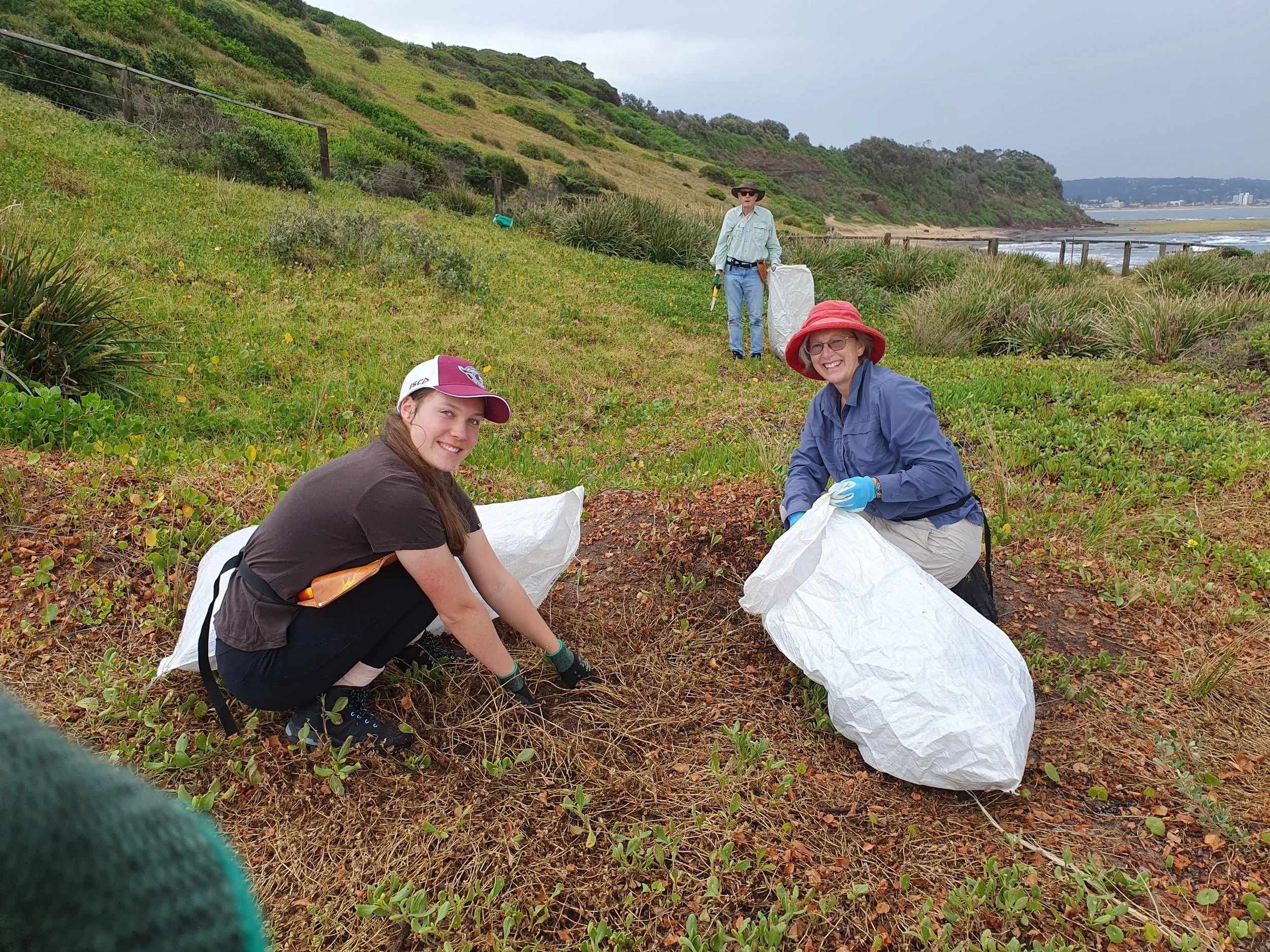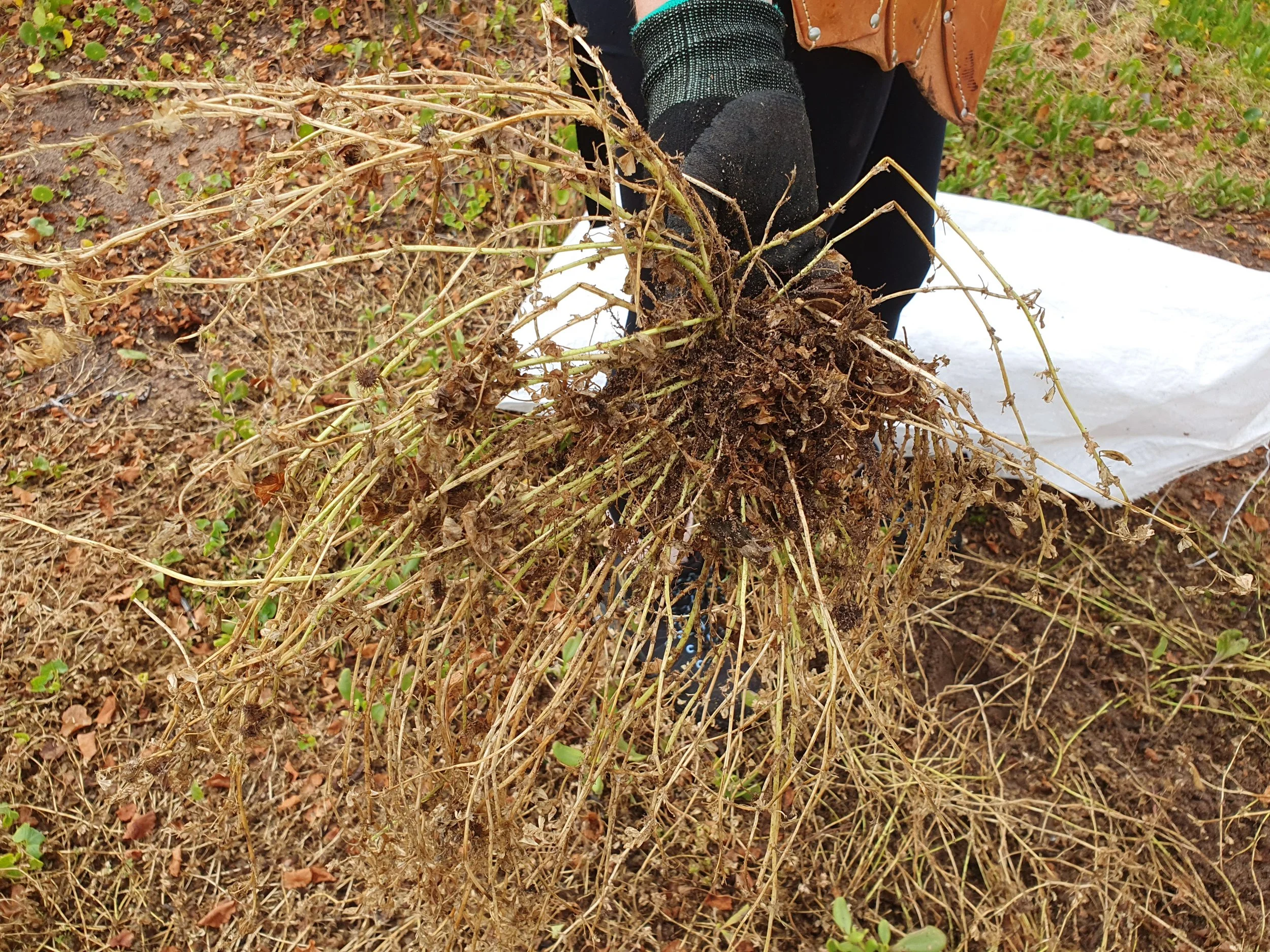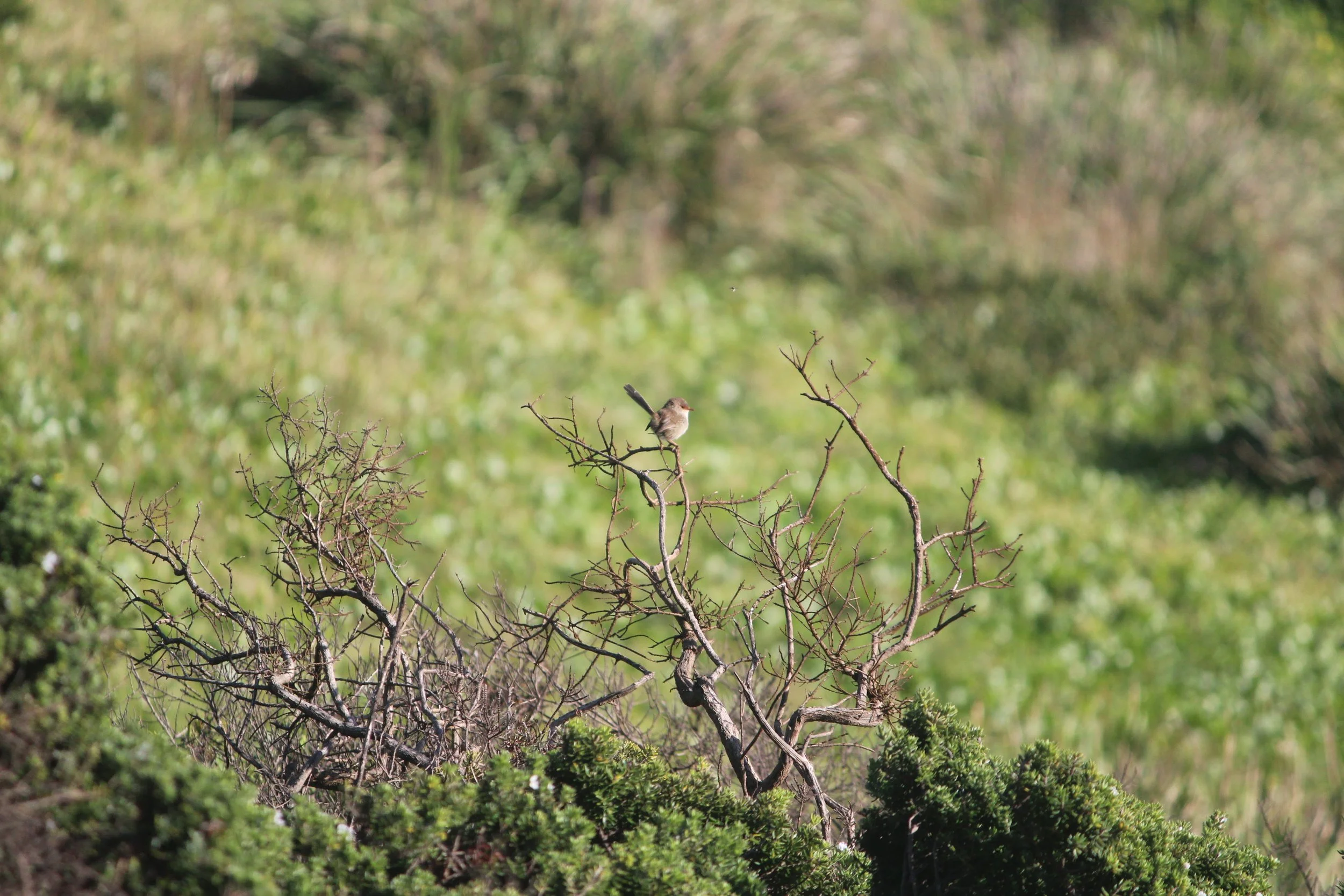Reefcare Report: Weeding and Wildlife!
Karina and Jennie removing Burr Medic, Jim in back - Image by Lisa
Despite the inclement weather, 8 of us with our Supervisor Mahi turned up for what happened to be a wonderful wildlife experience day!
Our fabulous Reef Care crew worked through the light showers, and got to enjoy a morning tea with Mahi’s chocolate cake in sun/cloud and being harassed by our resident magpies; they are so used to us they come within 30cm, talking and singing.
Juvenile magpie
Julie at morning tea gave the group an update on how we will continue to remove Bitou which is now getting into difficult terrain, so this will be done with Council and Contractor assistance, where the contractors will do the hard work and Reefcare will do the follow up clearing and planting.
Most of the crew worked on weed removal, Julie and Merrilyn asparagus fern, Gen and Brad cutting back bitou, the rest of us working in a couple of areas at the bottom of the site, removing spent Burr Medic (it was still covered in seeds so worth the work bagging this to reduce the seed bank), thistles, asparagus fern, oat grass and Bromus. Jim and Mahi worked weeding around the contractor plantings just west of the main track.
Removing old Burr Medic that still had seeds
But this highlight for the day was the wildlife, with fairy wrens, willy wagtails, ladybirds, 2 x white faced herons, Nankeen Kestrel and WHALES! Jennie spotted them first, there was a mother and baby which seem to just go around the whale watching boat – they must have had a wonderful viewing, the whales were so close, and another a little further out, slapping it’s tail. On the way back a number of us got to watch a magpie kill and eat a ghost crab – that was certainly something to watch – only a foot away from us.
Superb fairywren and ghost crab - Photos by Misima
The bird photographers were all out as a beach stone-curlew (Esacus magnirostris) had been sighted at Long Reef only two days before, these birds are seriously rare now as there are limited sites for breeding due to human development along the coast. The birds form a nest in sand, laying one egg per season just above the high tide line on the open beach, where it is vulnerable to predation and human disturbance.
We finished the day with several very full weed bags, as some of the Burr Medic can grow to quite a size. Other weeds that were targeted were blackberry nightshade, various thistles and of course – asparagus fern!
Text by Lisa





